You’re Never Too Young to Conquer New Challenges: Christina McCoy, CAE
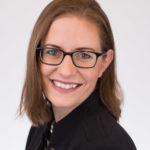
Do you remember how you started working in associations? This month’s Corner Office professional, Christina McCoy, CAE, landed her first association job literally hours after taking her last college exam. Although it took her a little longer to realize what association work represents and the endless opportunities it offers, she wasted no time becoming involved in the association community on a deeper level than just 9 to 5, joining ASAE’s Young Professionals Committee, attending the NextGen mentorship program, and earning her Certified Association Professional certification at age 31. She currently works for AMPED Association Management in Madison, Wisc., with offices also in Alexandria, Va.
Christina graciously took time to speak with Association Adviser about the excitement of building a career that is larger than working for just one organization, becoming a better association manager, and why everyone should kick the stereotyped “millennial” label to the curb.
Association Adviser: How did you get into association work?
Christina McCoy, CAE: My story starts when I fell into associations right after college. Almost 10 years ago, it was the last day of exams at my alma mater, the University of Wisconsin – La Crosse, and I had a job interview 2.5 hours away in Madison. I took my last exam, jumped in my car for the interview and got a job as an event and education coordinator for the International Association of Industrial Accident Boards and Commissions (IAIABC). It’s a 103-year-old association of professionals and regulators who oversee workers’ compensation issues. At first, I didn’t even realize I was working for an association. I worked on the programming side, ran conferences and worked on several committees.
I think a lot of the reason I got the IAIABC job was my qualifications, but it was also in large part to my determination. I entered the job knowing nothing and left knowing a lot about workers’ comp, about associations, and about where I wanted to go next. I loved the constant change of pace, the new challenges and the great opportunities to work across industries. Plus, it was exciting to work for an organization with such a rich history. They have paper-only recordings of meetings from the early 1900s. It would take some members days to arrive at a meeting!
Being a young individual, I was excited about leaving my mark somewhere as I began my professional career. I didn’t have a lot of clarity about what that mark would be, but I was content to let my first association job guide me. Workers’ comp issues aren’t always the most glamorous, but at its core, it’s about safety among anyone who works. So my first job had the potential to affect so many people! And the topics this association covers – opioids in the workplace, medical marijuana, the definition of work itself – these are topics that are prevalent in other industries and in mainstream life. So, falling into associations was exciting after all.
AA: What do you do for AMPED?
CM: I joined AMPED in April 2017. I’m the newest account executive on the team – and the youngest. I lead one of our newer clients, the Fantasy Sports Trade Association, and recently joined as program director for the Americas Committee for Treatment and Research in Multiple Sclerosis. It’s important to share that the AMPED culture is infused into each of our clients. Our office is hip and modern, and staff are incredibly collaborative, regardless of which clients they have. This culture was a huge draw for me when choosing to make a career change, because I value the interconnectedness and team environment.
AA: Really? Did you have to become an expert in fantasy sports?
CM: No, I didn’t have to become an expert, although it’s exciting to work for an association that people understand! People bring one of two experiences to managing an association: you are an expert in the industry or an expert in understanding association management nuances, and you learn the industry through experience. I happen to have played in my family’s fantasy sports leagues for several years, so I have a little experience in fantasy sports but more experience in management.
AA: What do you do for them?
CM: I’m the Fantasy Sports Trade Association’s managing director. I work with their volunteer leaders, help set a strategic vision for the association, and help launch their strategic initiatives. They represent big sports companies plus small businesses and are looking to increase member value. I help them accomplish that by building relationships and networking on their behalf throughout the fantasy sports industry. – and it’s a huge industry. The Fantasy Sports Trade Association is celebrating 20 years of existence, but fantasy sports have been around for decades. There are nearly 60 million fantasy sports players in North America. Fantasy sports is a $7 billion industry in the United States alone, and is a rapidly growing market in India, where my client wants to expand and partner with the Indian Federation of Fantasy Sports.
There’s a fantasy game for every sport. Football, basketball and baseball leagues are the most popular in the U.S., but abroad, you’ll find fantasy leagues for sports like cricket, soccer and sumo wrestling. It’s exciting to work for a client that represents an industry based on fun and excitement with friends and family. Who doesn’t love that?
AA: What does your typical workday look like?
CM: I get into the office at 7:30 and start by checking tons of emails. If there is a secret recipe for managing emails, I would like to acquire it. I identify critical emails and answer them, then I’m on calls most of the day. In the managing director role, I’m constantly reacting to things and having conversations where we can be proactive. This is my third or fourth call this morning! When not having calls, I’m putting together agendas for the next call. But what’s great about AMCs is that I’ll have the opportunity to engage with multiple clients every day and week. There’s this constant need to balance priorities and aptly address them, to discover and fulfill members’ needs, and to plan for appropriate use of resources. That’s what’s exciting about the AMC model. Through this constant loop of action and feedback, I use my experience with more than one client to make everyone better. I really enjoy and thrive by change and a dynamic atmosphere.
AA: You earned your Certified Association Executive (CAE) designation this year. What made you want to get your CAE?
CM: A few things. First, after several years of working for the IAIABC, I was looking for something new to do. I felt like I needed more leadership opportunities or a change in association jobs. My boss at the time encouraged me to volunteer with ASAE as a way of gaining leadership experience, so I browsed their committees and found the Young Professionals Committee. It looked like a good way to network with others like me and open up my mind and worldview to more possibilities within the association industry, because most associations are not located in Wisconsin, where I am. I volunteered to be vice chair of the Young Professionals Committee, and thankfully I was accepted. I saw others on the committee who had their CAE, but at the time thought I was too young and inexperienced to earn it for myself.
Then I attended ASAE’s Next Gen Association Summit, where 20 association professionals under age 35 gather every fall for a “meeting of the minds” with each other and with five mentors who are graduates of the program. We talk about big things that are five years or more away from affecting associations but still coming, such as artificial intelligence and its effects on membership, the life cycles of associations, or other big issues.
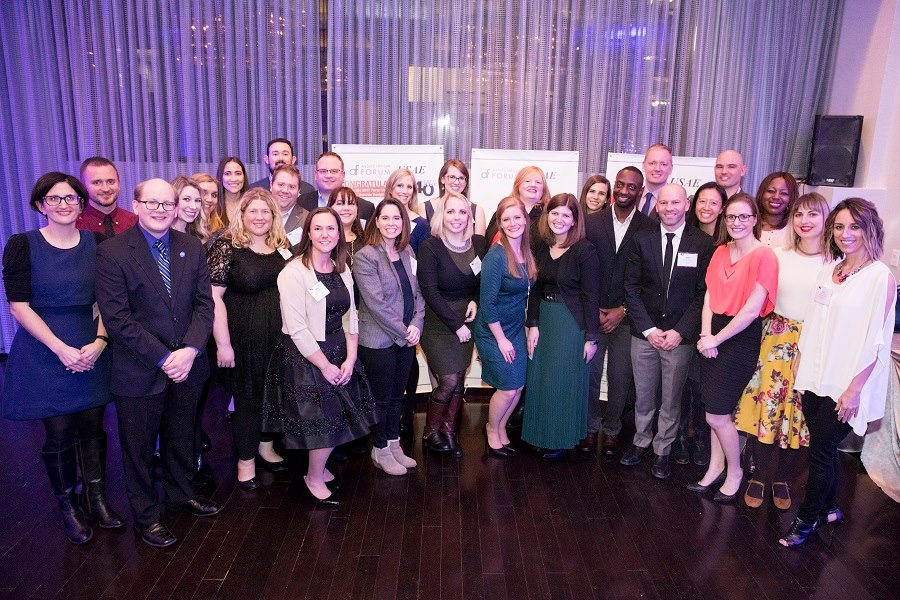
A lot of people in the program envision themselves in the C-suite at some point in their career and have a 5- or 10-year career plan. I was pregnant with my second child at the time so I had other things besides a career plan on my mind, but the mentors at NextGen really challenged me to pursue it. I also looked around and saw others who had experiences similar to me and were already CAEs, so I began to think, if they have it, why shouldn’t I? At that point I knew I was either going to dive deep into associations or just find something else.
AA: How do you know when it’s time to pursue a professional credential?
CM: I think that’s similar to asking, how do you know it’s time to apply for the C-suite? The answer is, you just have to try and put yourself out there. There seems to be a fear among young professionals that they’re too young or too inexperienced to earn the CAE designation. Only 4,100 association professionals, or 5 percent of the industry, hold the CAE certification. Of those, I’ve anecdotally heard that less than 5 percent are under age 35. But as my ASAE mentors challenged, youth isn’t a good reason to hold back. Young professionals still have professional experience to rely upon when facing new challenges or when working with clients or members.
Plus, if you are excited about your work, you should strive to be the best you can be at it. There are leaders who are passionate about their industry, and there are leaders who are kind of just in their role, whether it’s marketing or HR or something else. At Next Gen, I realized I am really passionate about associations and want to have a career working for them. So it was time to invest more in my career and the industry I realized I love.
Becoming a CAE has been great. I’ve met my tribe – people like me with shared experiences, the same concerns, and similar ideas about how to approach situations, but they come from different types of associations, so I can still learn from them.
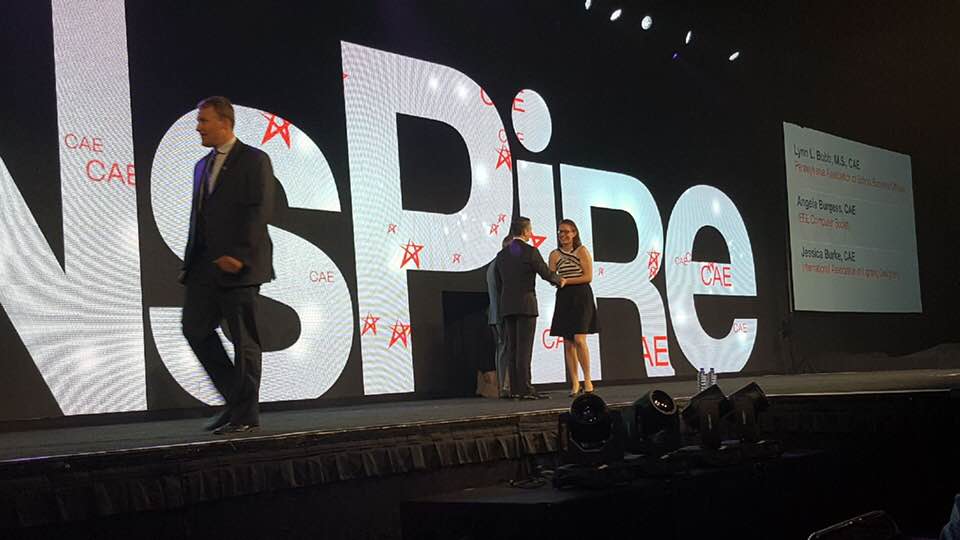
AA: What was your career like when studying for CAE?
CM: It was crazy. Here was my CAE-earning timeline: I gave birth to my second child on January 1. In January and February, I earned the remaining 20 credits required to be eligible for the exam. Then I studied during my three months on maternity leave. Then I changed jobs in March – while still on maternity leave. In late March and April, I worked part-time for both IAIABC and AMPED to ensure a smooth transition for both, including running and attending IAIABC’s Spring Forum conference (yes, my 4-month old came along!) while onboarding a new client with AMPED. Then I took and passed the CAE exam in May. Crazy, right? I’m thankful for the support I had along the way, especially of my husband, family, coworkers and CAE mentor. I couldn’t have done it without them. Needless to say, I took a well deserved week off in June to disconnect and travel to Italy.
AA: Right! How did you balance family and professional demands?
CM: To me, it’s all about knowing where and when you need to put energy in personal and professional life to be successful. Have you heard of the Four Burners Theory? Imagine you have a stove with four burners: career, family, friends and health. Just like an actual stove, you cannot have all burners on high at the same time if you want to flourish – it’s unrealistic to try and successfully cook more than two high-heat meals at once. Ideally, you want to have just one burner on high; the others off or simmering. At most, you can have two on medium or high at the same time.
Life works the same way. With the support of my husband, I was able to turn the family burner almost off and career burner on full blast. I had no interaction with friends, and my health burner was almost completely off – I gave up soda during this time as my one nod to healthy habits, and I haven’t had one since. Mainly, my life was working, volunteering and studying because that’s what I needed to do to make it through five months and earn my CAE.
If you want something badly enough, you will make it happen no matter the circumstances. One person I know said they studied for their CAE certification in the middle of a house renovation. I thought, if they can do that, I can earn my CAE while on maternity leave. I firmly believe that if you can envision it and project it in your mind and “in the universe,” it can become a reality. This step forward in my career was the reality I was pursuing.
AA: What do you want your reality to be in five to 10 years, now that you are a CAE?
CM: When I think about this question, I ask myself: What are the things that are important to me? Making a difference in an individual’s life or in the lives of others in my industry. Using my experience to touch lots of clients. Being a professional mentor and being seen as a thought leader for the association space. Walking a path to being accepted as an ASAE Fellow.
Being a CAE is just the first step of many in a career of constant learning. I could learn about anything, and I want to learn about everything. But more than that, I’m hoping I can be another piece in the larger perspective.
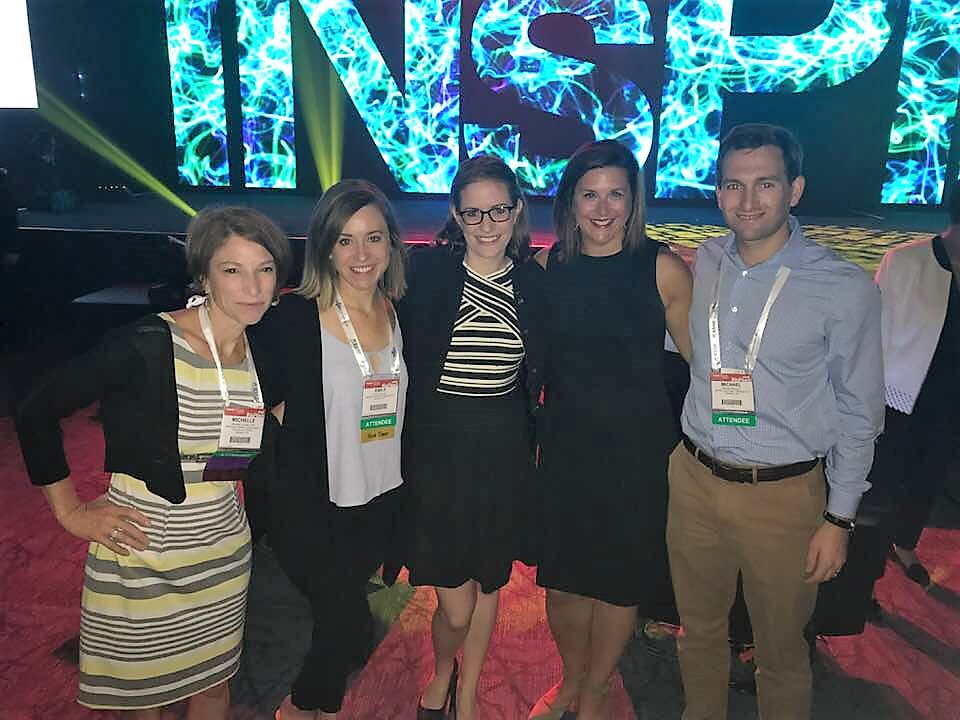
AA: How does a professional certification like the Certified Association Executive designation help you be a better association manager?
CM: Earning the CAE has helped me become more measured in response to questions. I’m constantly evaluating what the association I’m working for could do differently or better, and how we could be more efficiently using resources and strategy. If we take a certain stand, what does it mean for members and the industry? How can I empower and inspire members and business partners to do more together? Basically, the CAE designation helps me take the relatively limited experience I have and validates it. The CAE makes me a better type of glue that connects people and keeps them moving.
AA: Why do you think it’s important for young professionals to have a seat at the board of directors table?
CM: It’s important for young people to get involved and keep learning, but I also think organizations need to identify their goals before automatically putting young people on a board. You don’t want to fall into the trap of putting a young professional at the table without recognizing what they can bring to the table; that could be isolating. Merit is necessary too. An organization should think about the goals it could achieve with certain board makeup. Is a younger voice and perspective part of your strategy, but currently underrepresented at the board level? This is analogous to having a goal of better wealth management without having a CPA on board. Maybe your goal is having more diversity; maybe you’re looking for different generations to populate a board to help build a leadership pipeline through mentoring and succession.
Think through your organizational goals and publicize the value you hope to gain by achieving those goals so that it’s clear to people serving what those goals are and how they are expected to contribute toward that value. It’s been my position to encourage young people to apply for board positions in which they feel passionate and qualified. Don’t wait for someone to tap you on the shoulder.
At NextGen, one of the biggest takeaways was that we all have the same questions and problems. And we’re all looking to solve them. The perceived line between senior leadership and everyone else is much closer than you think. We’re looking for brave individuals who will try to bridge that gap. I think that’s what board members are.
So association boards of directors don’t need to have a dedicated young professionals’ spot – although I believe that rule should be flexible depending on the industry. Some industries should consider having a standing YP spot on boards because they skew older and they need some younger leadership to survive. But mostly, I believe a board member post isn’t always the solution, but part of it. A title does not define a leader.
AA: What is your opinion about generational or age-oriented labels like boomer, millennial or young professional?
CM: I’d answer that question with another question about generational labels: Why is there pain in being known by one or the other?
By insisting on labeling generations and reducing the people within a given generation to a media-generated stereotype, I think there’s a missed opportunity to have a different conversation: How people across generations are more similar than different. It’s fun to talk about differences but it’s not productive. Choosing to talk about similarities is exciting because if we focus on similarities, we can come together better and do great things. This is what the ASAE Foundation staff does when working on campaigns for things like Giving Tuesday. They ask people to positively give by focusing on similarities between association professionals and helping out professionals like you. It works so much better than talking about helping someone not like you. Focusing on differences just divides people.
Choose to be impactful. That’s what people will remember. If you do get the chance to come up with some or all of the definitions of a generation, great. ASAE worked with our YP Committee to refine the characteristics of millennials as stated in their Drivers of Change document. We pointed out that millennials, many of whom are technically at the older age of the spectrum [in their 30s], are not on their way into leadership positions and positions of influence, but already there. We wanted to change the conversation from “Millennials are coming,” to “We’re here now.”
Last year I wrote about career pathing and commented that someone wiser than me shared their perspective on that there are four sets of 15-year spans in a lifetime: ages 5 to 20, 20 to 35, 35 to 50, and 50 to 65. And each – learning and developing, career exploration and establishment, career maximization, and leveraging and giving back – is representative of growth in our life. Young professionals are on the cusp of beginning the career maximization stage, and the small population of Gen X before us allow some YPs access to leadership roles sooner than others.
AA: What do you and your colleagues prefer to be known by?
CM: I like young careerist. It speaks to the young part, which is fact, but it also speaks to the idea that we’re investing our careers in our industry and in the association space. This is language the industry needs to communicate among itself, that is often lost in the larger history of associations.
Some people like the label emerging leaders. It’s okay – it’s better than millennial – but I think it’s kind of vanilla. On our Young Professionals Committee, half of us are CAEs. So if we’re CAEs but also emerging, when do we become leaders?
If you have to label a group, know that any label can be broken down into smaller, more accurate labels. Older millennials grew up differently than younger millennials – we didn’t have the internet from birth, or smart phones since middle school.
Mostly, I think we should dropkick the word millennial. #byefelicia
AA: What advice would you give someone who is starting their career in association work?
CM: First, I’d say there is an association for everything. Because of this, the opportunities to make an impact are endless. If you work for a company, you’ll have an impact on that company alone. But if you work for an association, you’ll have impact on an industry. That’s the story of associations. At the Fantasy Sports Trade Association, we don’t have an impact on one game, we have an impact on all fantasy games. Associations are industries, and working for associations is larger than working for a company.
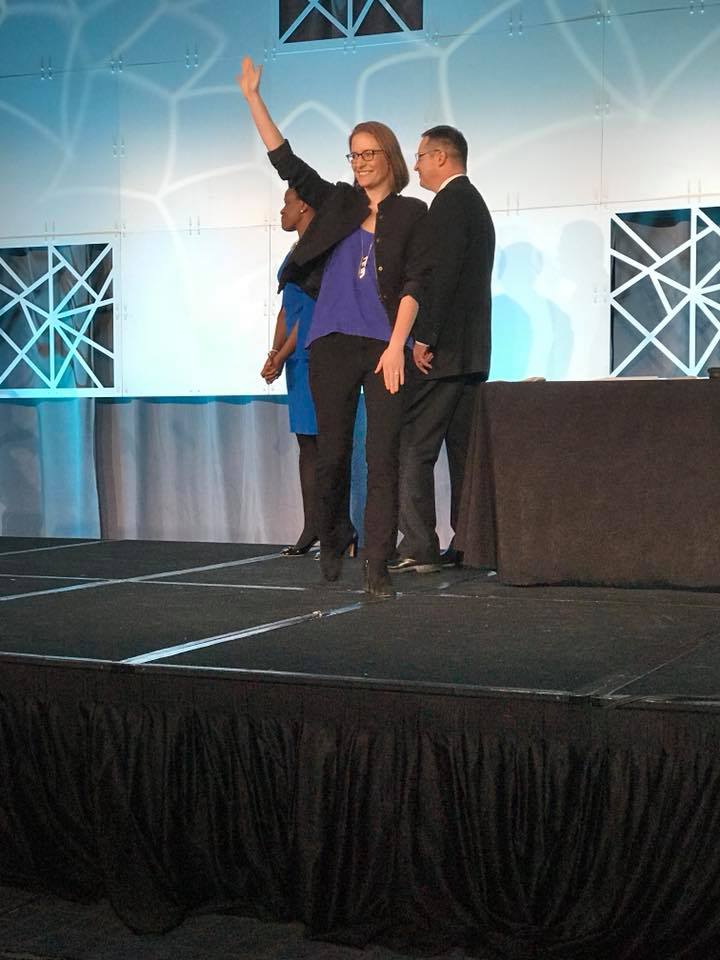
To someone working with a young careerist in an association, I advise that once you have a young leader in associations, keep them in associations. We don’t want to lose them to companies! The next wave of impact is demonstrating the power of associations to the larger world, and we need young people to ride out that wave.
Second, I’d advise that they get a mentor. I cannot emphasize enough the role that mentors have played in my personal success. I’ve been able to work within the YP committee and NextGen, and accolades like being nominated for ASAE’s 40 under 40 comes from being smart enough to recognize that you need mentors. There are three types of mentors: Those you have for a reason, those for a season, and those for a lifetime. Mentors for a reason will connect you to opportunities you can’t find on your own. Mentors for a season might help you navigate a new role, such as those who helped me when I began working with volunteer leaders. I called upon a few people to teach and encourage me through the process. Mentors for a lifetime are people who are your age or at the same career level that you’ll laterally network with and mutually mentor your whole professional career. Learn from their experiences as you go through your work life together.
I’m thankful for mentors I’ve had, currently have, and will have. Knowing that value and giving back when I can is one of the most important things about association (or any industry) life. I’m a millennial, but I give back. Most of us do! So I guess I’m proud to be a millennial after all.

